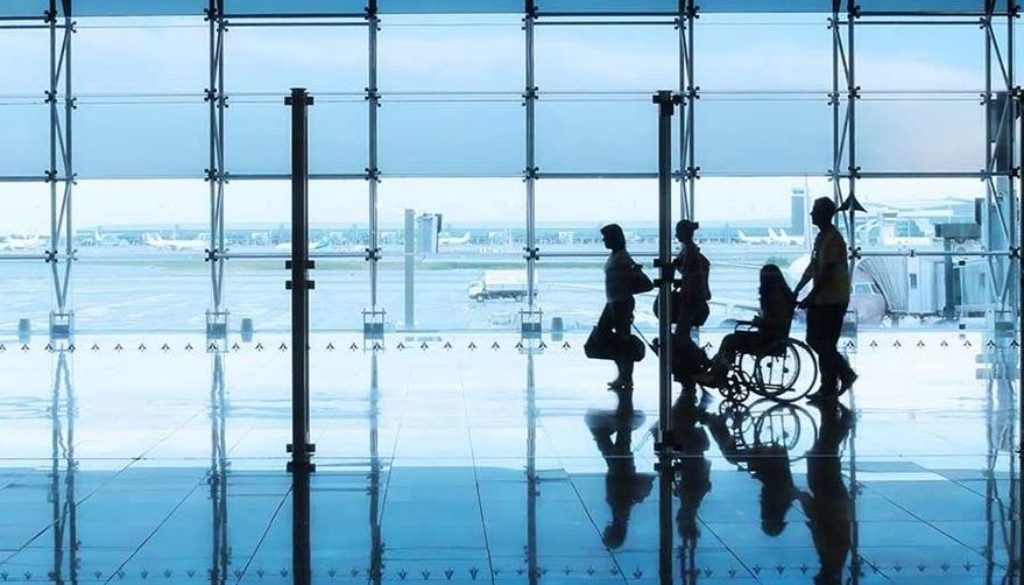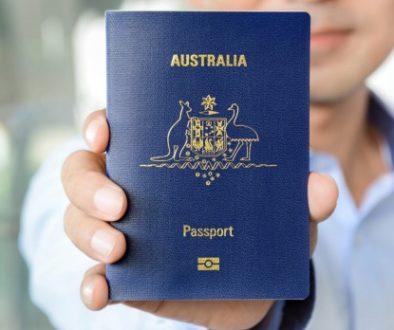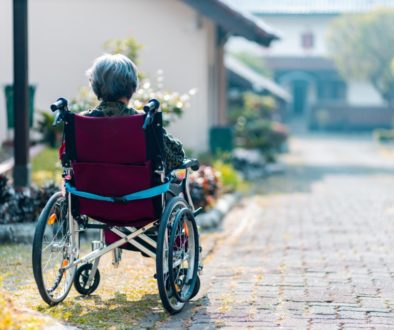Travelling with a disability
Source: www.choice.com.au
People with disability take holidays just like everyone else, but they often face extra obstacles along the way. We look at the challenges and the how-to of accessible travel, including booking and boarding flights, airport security, accommodation, the rights of travellers with disability, and more.
Air travel
Airlines and airports are bound by the Disability Discrimination Act (DDA) to provide services for people with disability. Trained staff should be able to assist with:
- getting around the airport
- handling baggage
- getting on and off the plane
- getting to and from the plane toilet (in the case of a semi-ambulant person)
- opening packages and identifying food on board the plane
- delivering safety briefings in a way that all passengers can understand.
Staff are not expected to assist with eating, administering medication, using the toilet or lifting or carrying a passenger.
Know your needs
Flying with a disability takes some forward planning. You should explain your needs to airline staff when you book your flight.
Will you:
- be travelling alone or with a carer?
- need help navigating the airport?
- need help with baggage and boarding?
- be able to use the toilet on the plane?
- be able to understand safety briefings and instructions from staff? (Some airlines have braille or large-print books available).
“When you have a disability, your needs change,” says Australian wheelchair rugby Paralympic gold medallist Nazim Erdem. “The main concerns are: What do I do if I need to use the toilet? What do I do if I have a bowel or bladder accident? Will I have enough room to do pressure relief so I don’t get a pressure sore? … But airline staff are mostly aware of this and are very helpful.”
Plane accessibility
Not all planes board via an aerobridge. If you can’t manage steps, let the airline know in advance as you may need to use a lift. Some international budget airlines, such as Tiger, charge a fee.
If you’re unable to walk to your seat, you can ask for an aisle chair – a collapsible wheelchair narrow enough to travel along the aisle. Most planes have some seats with adjustable arm rests, so you can move from the chair into your seat.
“People with disabilities are first on, last off,” says Nazim. “Airlines usually like me seated on the aisle seat but this can be a problem if other passengers need to climb over me to get to their seat or use the toilet.”
In April 2014 a man with multiple sclerosis was unable to board a domestic Jetstar flight after check-in staff told him his wife would have to lift him into his seat without help from cabin crew because of health and safety concerns. Unlike many Qantas and Virgin services between major Australian cities, which offer an electric hoist, Jetstar only provides a ‘slide board’.
Toilets
Toilets on planes are usually tiny, so access can be a problem for many people. Some planes offer a privacy curtain so the door can be left open while a carer assists. The 747-300s (now phased out in Australia but still in operation overseas) and the 767-200s and 767-300s have outward-opening doors for easier access; and some of the newer wide-bodied jets, like the A380 and the 747-400, include an accessible toilet. If you plan to board the plane using an aisle wheelchair, check with staff to make sure it will be available during the flight to access the toilet.
Wheelchairs
If you’re travelling with a wheelchair, almost all airlines will ask you to check it in. Some budget airlines won’t carry electric wheelchairs at all, and those that do may disconnect the battery and carry it separately.
In May 2014, Air Asia refused to check in a Western Australian man’s electric wheelchair on a flight to Bali. The airline’s policy prevents the carriage of battery-operated wheelchairs. Even after the man offered to remove the battery and leave it behind, he was told the chair exceeded the maximum weight limit.
Most airlines have a greater baggage weight limit for mobility aids and medical supplies, and only a few of the budget airlines will charge extra. For health and safety reasons there may be a limit on individual item weight and dimensions, so you could face difficulties if you have a heavier wheelchair that can’t be taken apart. Shipping the wheelchair as freight is an alternative option, as is hiring one at your destination.
Tip: Some passengers have been able to take their own collapsible wheelchairs on board the new Qantas A380 Airbus.
Two wheelchair limit
In 2008 a Queensland woman accused Jetstar of discrimination after the airline tried to change her booking because two wheelchair users were already checked in on her flight. The court ruled in Jetstar’s favour, finding that making provisions to carry more than two wheelchairs per flight would cause the budget airline “unjustifiable hardship” – a defence under the DDA.
Acting Disability Discrimination Commissioner Susan Ryan describes the two wheelchair limit as “unreasonably restrictive” to the rights of people who need to travel with wheelchairs. “While clearly there has to be a recognition of the actual capacity of, say, small aeroplanes to accommodate a certain number of wheelchairs … the commission considers a straight two wheelchair policy unfair and discriminatory.”
Tip: Virgin and Tiger also have a two wheelchair limit on domestic flights.
Assistance dogs
Assistance dogs are generally allowed to travel on the floor of the cabin on domestic flights. International flights may be trickier because of quarantine laws and airport rules in the country you’re travelling to. You’ll also need to consider the quarantine requirements when returning to Australia.
Tip: Speak to the airline well in advance and be sure that you have the necessary paperwork from an accredited animal training organisation.
Airport security
If you have a wheelchair or mobility aid and you’re unable to pass through the metal detector without it, staff may search you with a handheld device. If they opt to do a physical search, you have the right to ask for a private room.
Security staff might also search inside mobility aids. Try not to take it personally, smuggling does happen: last year a man was caught at Madrid airport hiding a kilogram of cocaine inside his prosthetic leg.
Hearing aids
There’s no need to take off a hearing aid before passing through security – it’s too small to set off the metal detector, and X-rays and scanners won’t damage it.
The rule about switching off electronic devices during take-off and landing doesn’t apply to hearing aids or cochlear implants. It’s important that all passengers can hear announcements.
Tips for flying with a disability
- Different airlines have different policies. Do your research first on the airline’s website.
- Speak to airline staff well in advance to be sure they can meet your needs.
- Call to confirm plans on the day before your flight.
- Allow plenty of time for checking in, boarding and meeting connecting flights.
- If you have a stopover, consider what your needs will be – you may not have access to your mobility aid.
- If you’re travelling with a carer, they may be eligible for a ‘Companion Card’ discount from the airline.
Other transportation
“In principal, transport operators are required to treat people with disability in the same way they treat everybody else,” says Susan Ryan. But the reality is that many buses, trains, trams, taxis and ferries in Australia still aren’t accessible to everyone. Transport overseas can be even more hit and miss. When in doubt, always do your research and phone ahead.
In 2010, Murray’s Coaches was found to have discriminated against a wheelchair user who was unable to travel on their service from Sydney to Canberra, despite having given them advance notice of her needs. The judge found that the company, which operated 154 coaches at the time, could have made “reasonable adjustments” to provide an accessible vehicle.
Hire cars
Most major hire car agencies include wheelchair-accessible vehicles in their fleets, and some, including Avis and Hertz, offer vehicle modifications such as hand controls, swivel seats and transfer boards (although these aren’t likely to be available outside major cities). Book ahead to ensure availability as the number of accessible cars is limited. There are also a number of disability transport specialists, including Wheelaway and Wheelies Van Rental. Disabled Motorists Australia can offer further advice.
Accommodation
Most major hotel booking sites have the option to filter for accessible accommodation, but Hotels.com is the stand-out, with a range of specific search criteria including facilities for people who are hearing impaired, who need braille signage, accessible parking, a roll-in shower and more.
Websites nican.com.au, cangoeverywhere.com.au and australiaforall.com have accessible accommodation directories collated by people with disability. Nican also has an iPhone app.
What does ‘accessible’ really mean?
Accessibility standards haven’t always been consistent or regulated, so the word ‘accessible’ is too often used as a one-size-fits-all description. “Every toilet is different, every ramp is a different gradient … I’ve seen hotel proprietors who think having only three or four steps, rather than a flight, is ‘disability access’,” says Craig Wallace, president of People with Disability Australia (PWDA).
Craig recommends asking as many specific questions as you need to. “Don’t be afraid to ask for things like pictures to be emailed. I’ve happily asked for a concierge to snap off a picture of a toilet on their mobile phone and send it to me. Better to feel a bit weird than arrive and find you can’t move around in the loo.”
Travel insurance
A disability shouldn’t prevent you from buying travel insurance, however it might make finding a good policy trickier and more expensive. Under the DDA, insurers must assess the actual risks, rather than make assumptions about disabilities. If you’re having trouble getting insurance, a letter from a medical professional might help, particularly if they can state that your condition is under control and you’re not likely to need medical or hospital treatment while on your trip.
Note that insurers do exclude cover for certain pre-existing medical conditions and generally do not provide cover for any illnesses or incidents that arise from these conditions. Check your policy document to know what you are, and are not, covered for.
If you’re travelling with a wheelchair, mobility aid or hearing aid, you’ll need to insure that as well.
Tip: Many insurance policies exclude hearing aids, so check the small print and take out specialist insurance if necessary.
A growth industry
Around 20% of the Australian population identify as having a disability; of these, 88% take a holiday every year, injecting $8 billion into the travel industry. With an ageing population, and the introduction of the National Disability Insurance Scheme, those numbers are set to rise.
“The idea that people with disability do not travel or have spending power is a myth,” says Craig Wallace. “People with disability are more likely to travel with a carer, friend or family member. If a place is inaccessible the business may miss out on the whole group.”
While accessible tourism is booming in other parts of the world, Craig says that Australia has been left behind because of a lack of clear legislation and compliance in recent decades – despite the fact that we don’t face the same challenges as countries with centuries-old buildings or difficult topography. “That’s a disconnect that’s going to become ever more obvious as the Baby Boomers retire and start insisting on accessible facilities and we work out the cost of retrofitting them is so high.”
New technology
The internet has revolutionised the way travellers share and search for information about accessibility. People with disability can do their research online before they go, share reviews, and use apps while on the move.
For example, Craig Wallace recommends Google Earth as a valuable tool for wheelchair users. “It’s now possible to actually zoom in and check out whether you can get up and down a curb.”
Discrimination
“If you believe you’ve experienced discrimination, you can bring your complaint to the Australian Human Rights Commission under the Disability Discrimination Act,” says Susan Ryan. Complaints are dealt with by a conciliation team and often result in businesses improving their facilities and services.
Making a complaint is free and confidential. Visit humanrights.gov.au or phone 1300 656 419.
Resources
- nican.com.au, cangoeverywhere.com.au and australiaforall.com – accessible accommodation directories and travel advice. Nican also has an iPhone app.
- casa.gov.au (the Civil Aviation Safety Authority) – information about air travel with a disability.
- aqavic.org.au – advice about travelling with a wheelchair.
- disabledmotorists.org.au – advice about hire cars and vehicle adjustments.
- pwd.org.au (People With Disability Australia) – rights and advocacy.
- lonelyplanet.com now has a section on accessible travel.




